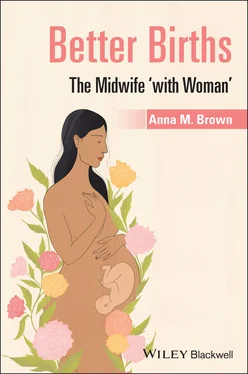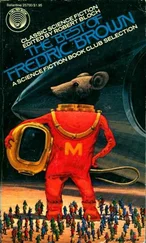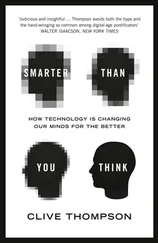Taking all this into account, then much of how early midwives were viewed by the woman they cared for must be inferred from such records. Evenden (2000) acknowledges that childbirth practices of seventeenth‐century midwives often comes from second‐hand sources, or ‘ prescriptive information from non‐participating males’ (p. 79), and these are often more a direction as to what the midwife should do; for example, how to prepare the bed, the lighting within the room, and how to examine the woman and physically care for her in labour. There isn't any evidence of the relationship between mother and midwife beyond this care given. This does not appear to be unusual, with a textbook written in 1671 by Jane Sharpe, a midwife, also focusing on the physical care given. What does give an indication of satisfaction of the care provided is the ‘ repeat business ’ that Evenden (2000) found in her exploration of midwives in seventeenth‐century London, with women often recommending their midwife to family and friends.
Where we do have direct evidence of midwives' attitudes to women, it can appear alien to the concept of women‐centred care and being ‘with woman’. Leap and Hunter (1993) describe how their ‘ romantic expectations about our midwifery heritage ’ were dashed by the authoritarian stance of some of the midwives they interviewed for their oral history, with these midwives taking a somewhat patronising approach to the woman in their care, one being quoted as saying ‘ They had to be taught to be good mothers. Some of them were very foolish and irresponsible ’ (Leap and Hunter 1993, p. 193). It is perhaps not suprising that this was the point of view of this midwife, when it is considered that midwifery textbooks at the time when she was likely to have been in training were prescriptive in the expectations of pregnant woman – down to what was appropriate clothing (Myles 1953).
A more humanistic approach to the mother–midwife relationship in a ‘with woman’ phenomenon is central to midwifery practice today. This is a physical manifestation of the relationship created by midwives with women. On the other hand, the ‘with woman’ concept is a mental construct, conceived and created in midwifery practice, to capture the essence, values, behaviours and functions of this special relationship. The ‘with woman’ concept is explored more closely in the following chapters and is specifically examined through a theoretical framework in the next section.
Rodgers' Concept Analysis Framework
Rodgers (1989) suggests that defining a concept can be difficult if the attributes that shape the concept are not clear. The author suggests that the different aspects of a concept are created through an evolutionary view, associated with its attributes, through the process of concept change and development. Such development can only occur if the ‘with woman’ concept is significant to both midwife and mother, is used to fulfil physical, emotional, spiritual and psychological needs and is applied through midwifery skills and shared knowledge in this partnership. In addition, such a concept is influenced by a set of internal and external factors before it can be achieved (Burgess 2014; Sheen et al. 2016; Foster 2017). The woman–midwife relationship is a key factor in fulfilling the aims of the ‘with woman’ concept and must include attributes of confidence, competence and compassion demonstrated by the midwife (Menage et al. 2017; Knapp 2017a; BenZion 2018), the environment in which care is given (i.e. woman and midwife focused place of birth, such as the woman's home or a birth centre/midwifery‐led unit) (Davis and Homer 2016), and the resources and cost that will affect the birth outcome (Leinweber and Rowe 2010). This ‘with woman’ concept is increasingly significant depending on such factors and how effectively it is achieved considering the extent and frequency of its use. The antecedents or events/phenomenon of this concept therefore precede and shape an aspect of the concept which has meaning to either the midwife and/or the woman herself.
In her presentation of how concepts can be analysed, Rodgers (1989) indicates a seven‐stage process or framework that will assist this investigation ( Table 1.1). An examination of the literature will explore the historical use and linguistic interpretation of the term ‘with woman’ and identify the antecedents to being ‘with woman’ which can be viewed from physical, emotional, spiritual and psychological perspectives and carried out through knowledge and care skills by the professional. The next stage in Rodgers' (1989) framework is to identify the attributes which articulate the concept through common use of the ‘with woman’ term and identify references to the application in events and situations as a phenomenon. The antecedents generally precede a perspective or instance of the concept. Consequences of a ‘with woman’ concept follow as a result or an occurrence of the concept. A final stage in Rodgers' (1989) Conceptual Analysis framework is to clarify and illustrate the attributes of the concept through presentation of cases, as examples from everyday clinical practice and stories as told by midwives and women.
Table 1.1 Rodgers' Evolutionary Conceptual Analysis framework (1989).
| Identify and name the concept ‘with woman’Identify surrogate terms and relevant use of the conceptIdentify databases and search term for ‘with woman’Identify the attributes of the conceptIdentify the references, antecedents and consequences of the concept ( Table 1.3)Identify concepts related to the ‘with woman’ conceptMidwives' and women's stories to illustrate the concept |
Search Strategy and Inclusion/Exclusion Criteria
A literature review was carried out using a search strategy identified by the editor and a midwife reviewer and applied to the following databases and the search terms as identified in Table 1.2. A range of literature in English, from academic journals and which were published in full text between 2009 and 2019, was identified and retrieved for review. Key search terms were ‘with woman’, midwifery, midwife, midwives, and mid* and related terms such as ‘with woman’, ‘being with woman’, ‘continuity of carer’, ‘known mid*’ and therapeutic relationship synonyms and abbreviations applied within the context of childbirth, such as ‘women centred care’ and combined with the Boolean operators of ‘AND’ and ‘OR’.
The following databases were accessed in the searches for literature published up to 2019 resulting in CINAHL, Medline, British Nursing Index, PsychINFO, Internurse and Nursing & Allied Health as working databases. The resulting literature was read for abstract content and then selected papers were scrutinised in full text to be included in the final number of papers identified. The results included an interpretation of the ‘with woman’ term which can sometimes be interchanged or used as a surrogate term. As identified in search terms, ‘with woman’ was associated with terms such as ‘continuity of care and carer’, ‘therapeutic relationship’, ‘woman centred care’, ‘doula or spiritual companion’ and ‘midwife led care’ or ‘known midwife’.
Table 1.2 Databases searched and number of articles selected for final review.
| Database |
Number of hits after application of search terms |
Number of articles selected for review |
Articles accepted after review |
| CINAHL |
96 |
15 |
5 |
| Medline |
71 |
16 |
6 |
| BNI |
137 |
15 |
2 |
| PsychINFO |
48 |
8 |
5 |
| Internurse |
22 |
3 |
1 |
| Nursing & Allied Health |
10 |
2 |
2 |
|
Screened for relevance and filters applied |
Duplications removed |
Total = 21 |
Data Extraction and Analysis
Читать дальше












